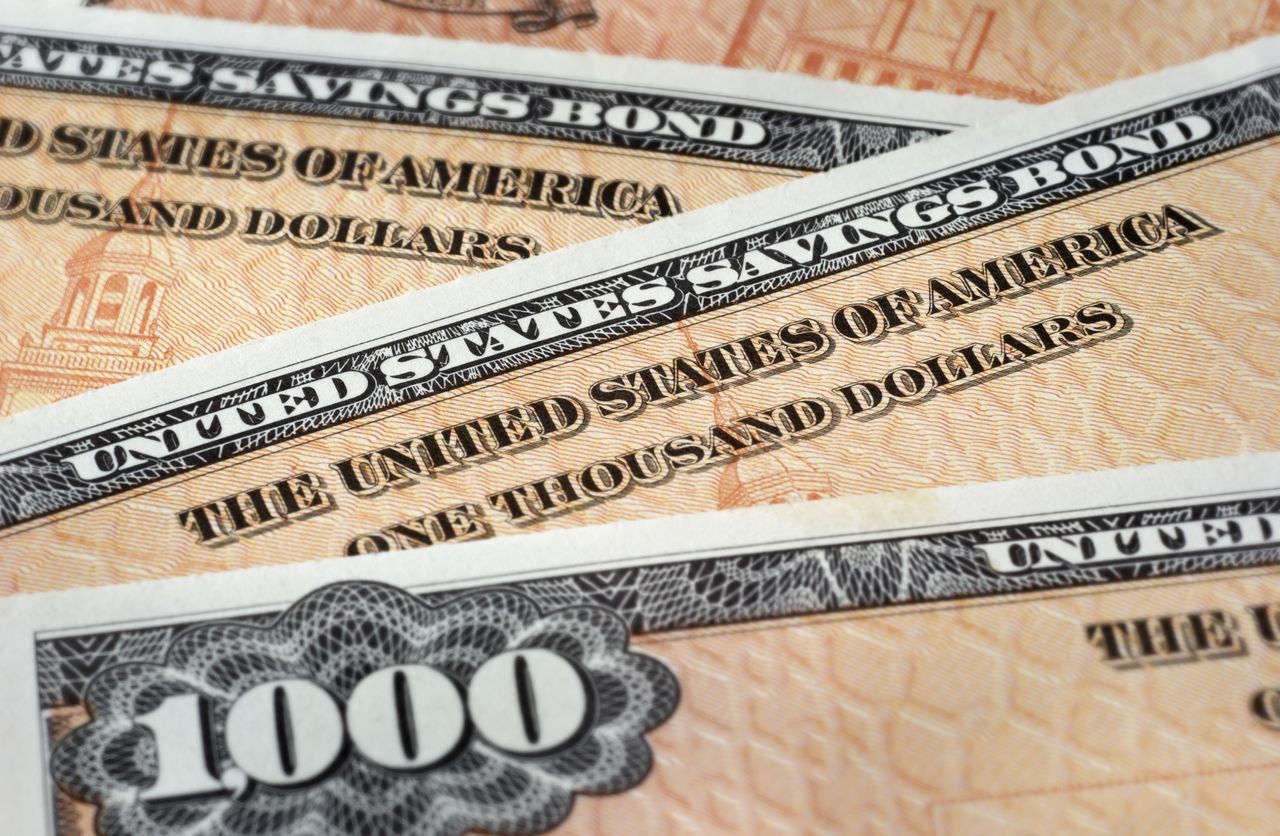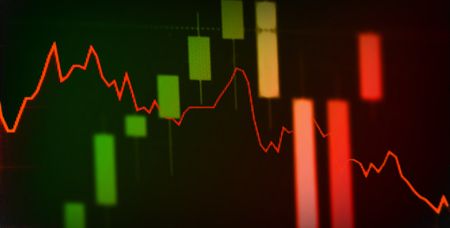The Current I-Bond Rate Until May Is Mildly Attractive. Here's Why.
I-Bonds issued November 1, 2024 through April 30, 2025 will have the same rate.


Alexandra Svokos
Though the potential return of U.S. Treasury I-bonds as a long-term investment is no sure thing, Americans have voted for them with their wallets: Billions of dollars of these formerly obscure securities were sold in 2022, including in a last-minute rush at the end of October of that year to capture the 9.62% rate. The demand was so robust it knocked the TreasuryDirect website, the only place these bonds can be bought, offline at times.
Of course, you can get them just fine today, now that the current I-bond rate is down. The rate is set every six months, in May and November, and is made up of two components. One is based on the government’s consumer price index (CPI), and given that inflation has slowed since 2022, the rate for I-bonds has also slowed, but it is still an attractive prospect in certain lights.
The other component of the I-bond return is a fixed rate — picked by the Treasury Department without further explanation — that will only apply to bonds issued November 1, 2024 to April 30, 2025. And that fixed rate is, well, fixed — unlike the variable inflation component, whatever the fixed rate was when the bond was issued, you’ll get paid that for as long as you hold the bond (and the term is 30 years).
The current I-bond rate, valid for bonds issued November 1, 2024 through April 30, 2025, is 3.11%. That includes a fixed rate of 1.20%. To put that in context, the best high-yield savings accounts and the best CD rates are giving returns over 5%. However, rate cuts have brought CD rates down from their high in 2024. Halfway into 2024, the S&P 500 has had a year-to-date return of 19.62%, making analysts' top S&P 500 stocks to buy an attractive option.

Sign up for Kiplinger’s Free E-Newsletters
Profit and prosper with the best of expert advice on investing, taxes, retirement, personal finance and more - straight to your e-mail.
Profit and prosper with the best of expert advice - straight to your e-mail.
So, 3.11% is not all that much to write home about. But I-bonds are still on the table because they offer stability and a guarantee.
What makes the current I-bond rate attractive
Consider the fixed rate of an I-bond, which is an important component of what an I-bond is. That rate is fixed for as long as you hold the bond, which has a term of 30 years. So, if you purchase an I-bond between now and May, you'll always get a return of at least 1.20%. Again, that's not a huge return, but it's a guarantee — and considering that people's most popular investment is cash, 1.20% for 30 years is a much higher return than you might get with cash just sitting in a checking account.
So here’s an interesting twist, and possibly a consolation prize for anyone who didn’t manage to get I-bonds when they were paying a higher yield in 2022: those bonds paid a fixed rate of zero.
While it might seem unimaginable now — as the Federal Reserve has just started to lower short-term interest rates after a long period of higher rates, and other rates, including mortgages, have climbed to levels not seen in decades — zero inflation or deflation could return. And if that happens, those who hold bonds bought between now and April 30 will continue to receive 1.20% interest, while holders of the 9.62% bonds will receive — at least so long as inflation is flat or negative — nothing.
And, again, if 1.20% seems laughably low, remember that only a few years ago, savers looking to certificates of deposit, savings accounts and other low-risk investments would have been darn happy with that.
What to do with your I-bonds
First, I-bonds must be held for at least a year. There is no way to cash them before this period. And second, if you redeem them before five years from the time they were issued, the last three months of interest is lost.
Another key note: There’s a limit of $10,000 a year to how much you can buy in I-bonds. But, you can also get $5,000 in I-bonds if you use your tax return to buy them, and those bonds will be issued in cash.
In case you haven't noticed, I-bonds are a little complicated. Ultimately, though, for the moment, they present a reasonably attractive long-term option for safe cash growth.
Related Content
Get Kiplinger Today newsletter — free
Profit and prosper with the best of Kiplinger's advice on investing, taxes, retirement, personal finance and much more. Delivered daily. Enter your email in the box and click Sign Me Up.

In his former role as Senior Online Editor, David edited and wrote a wide range of content for Kiplinger.com. With more than 20 years of experience with Kiplinger, David worked on numerous Kiplinger publications, including The Kiplinger Letter and Kiplinger’s Personal Finance magazine. He co-hosted Your Money's Worth, Kiplinger's podcast and helped develop the Economic Forecasts feature.
- Alexandra SvokosDigital Managing Editor
-
 Stagflation: What It Is and Why Retirees Should Care
Stagflation: What It Is and Why Retirees Should CareStagflation — the economic bogeyman of the 1970's — may return to the US. Here's what it could mean to your retirement.
By Donna Fuscaldo Published
-
 Why Losing Your Job Could Be the Best Opportunity to Plan Your Future
Why Losing Your Job Could Be the Best Opportunity to Plan Your FutureAmid this uncertainty lies an opportunity for strategic reassessment and personal growth.
By Mario Hernandez Published
-
 Can a New Manager Cure Vanguard Health Care Fund?
Can a New Manager Cure Vanguard Health Care Fund?Vanguard Health Care Fund has assets of $40.5 billion but has been ailing in recent years. With a new manager in charge, what's the prognosis?
By Nellie S. Huang Published
-
 Empower Review: Is This Financial Hub the Right Tool for You?
Empower Review: Is This Financial Hub the Right Tool for You?Empower offers you a way to see all your financial accounts and set savings goals in one digital hub.
By Sean Jackson Published
-
 See How Much Auto Tariffs Could Raise Your Car Insurance Rates
See How Much Auto Tariffs Could Raise Your Car Insurance RatesPresident Donald Trump issued a 25% tariff on all car imports. See how this tariff impacts the cost of your car insurance.
By Sean Jackson Published
-
 What You Don't Know About Annuities Can Hurt You
What You Don't Know About Annuities Can Hurt YouLack of awareness leads many to overlook these potent financial tools, and with the possibility of running out of money in retirement, that could really hurt.
By Ken Nuss Published
-
 Three Keys to Logical Investing When Markets Are Volatile
Three Keys to Logical Investing When Markets Are VolatileFocusing on these market fundamentals can help investors stay grounded rather than being swayed by emotion or market hysteria.
By Dennis D. Coughlin, CFP, AIF Published
-
 Yes, the Markets Are Spooked, But You Don't Have to Be
Yes, the Markets Are Spooked, But You Don't Have to BeIt's human nature for investors to freak out in a downturn. But with a little discipline, you can overcome the urge to sell and stay focused on long-term goals.
By Jimmy Lee, IAR Published
-
 Remembering Bogle: A New Standard for Municipal Investing
Remembering Bogle: A New Standard for Municipal InvestingImprovements in technology, data, systematic trading and risk analytics have led to more successful municipal indexing.
By Paul Malloy Published
-
 Stock Market Today: Stocks Are Mixed Before Liberation Day
Stock Market Today: Stocks Are Mixed Before Liberation DayMarkets are getting into the freewheeling rhythm of a second Trump administration.
By David Dittman Published